Rio Tinto Bosses Quit Over Destruction Of One Of The Earliest Aboriginal Sites
Conny Waters - AncientPages.com - Following the destruction of sacred caves in Western Australia, three heavy bosses are leaving the mining giant Rio Tinto.
The company's board has agreed with CEO Jean-Sébastien Jacques and directors Chris Salisbury and Simone Niven that the three will leave their positions.
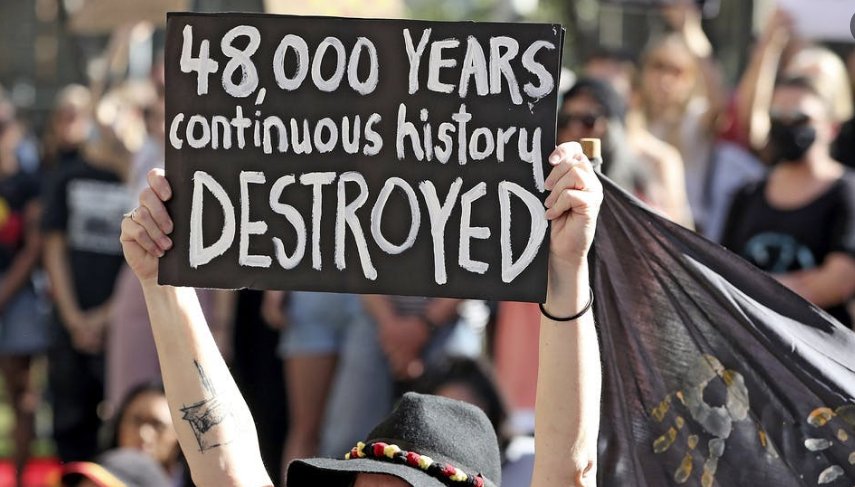 Demonstration at Rio Tinto's offices in Perth on June 9th. Photo: Richard Wainwright / AP / TT
Demonstration at Rio Tinto's offices in Perth on June 9th. Photo: Richard Wainwright / AP / TT
It was in May that the company blew up the caves in the Juukan Gorge in an isolated area in northwestern Australia. The blasting decision was made despite archaeological excavations showing traces of human activity there for tens of thousands of years, and despite the fact that indigenous people in the area protested.
Rio Tinto announced the resignation of its CEO and two top lieutenants Friday over the mining giant's destruction of a 46,000-year-old Aboriginal site to expand an iron ore mine in Australia.
The Anglo-Australian firm faced a growing investor revolt over the destruction of the sacred site in the Juukan Gorge in Western Australia's remote Pilbara region – one of the earliest known locations inhabited by Australia's indigenous people.
Following a board investigation into the May 24 incident, Rio Tinto said CEO Jean-Sebastien Jacques was stepping down "by mutual agreement" along with the chief of the company's core iron ore division, Chris Salisbury, and corporate relations head Simone Niven.
"What happened at Juukan was wrong and we are determined to ensure that the destruction of a heritage site of such exceptional archaeological and cultural significance never occurs again at a Rio Tinto operation," chairman Simon Thompson said in a statement, as cited by Daily Sabah.
The cultural importance of Juukan Gorge was confirmed by an archaeological dig carried out at one of the caves – known as rock shelters – a year after Rio Tinto obtained approval to blast in the area.
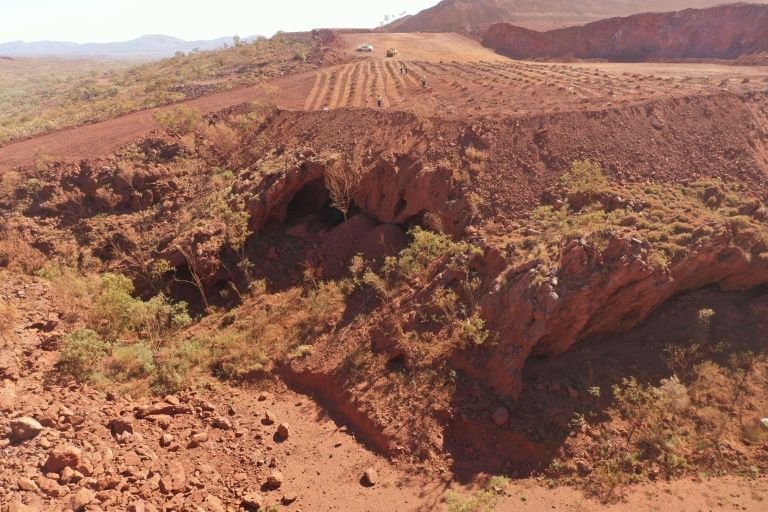 The Juukan Gorge in Western Australia -- one of the earliest known sites inhabited by Aboriginals in Australia, is shown in this photo by PKKP Aboriginal Corporation
The Juukan Gorge in Western Australia -- one of the earliest known sites inhabited by Aboriginals in Australia, is shown in this photo by PKKP Aboriginal Corporation
The dig uncovered the oldest known example of bone tools in Australia – a sharpened kangaroo bone dating back 28,000 years – and a plaited-hair belt that DNA testing linked to indigenous people still living in the area.
An internal company review in August determined that "a series of decisions, actions and omissions over an extended period of time" preceded the choice to go ahead with the Juukan Gorge blasting despite concerns over the fate of the sacred Aboriginal site.
In an initial response, the company stripped millions of dollars in bonuses from the three executives.
But the firm's shareholders and corporate responsibility bodies derided the move as insufficient and called for heads to roll.
'Crucial first step'
The National Native Title Council, which represents indigenous landowners, welcomed what it called the "dismissal" of the Rio Tinto executives, but said such staff changes were "only the crucial first step."
"We hope this will send a strong message to the whole mining sector: you need to join the 21st Century and start taking your environmental, social and corporate governance seriously," said NNTC chief executive Jamie Lowe.
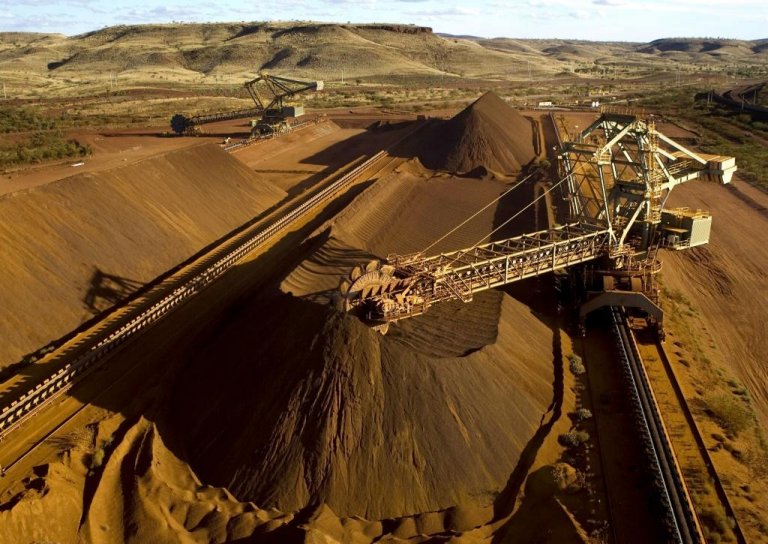 An internal review found that 'a series of decisions, actions and omissions' preceded the decision to go ahead with the Juukan Gorge blasting Photo: RIO TINTO
An internal review found that 'a series of decisions, actions and omissions' preceded the decision to go ahead with the Juukan Gorge blasting Photo: RIO TINTO
Jacques, who has been CEO since 2016, will remain in his role until a successor can be found or until March 31, whichever is sooner, and the other two executives will leave the company on Dec. 31.
In announcing their departure, Thomspon said all three executives would be paid undisclosed "separation terms" in line with their contracts, raising the specter of significant payouts which quickly rankled investors.
"We will ... be looking closely at the separation arrangements, with the expectation that any exit won't provide a windfall," said Louise Davidson, CEO of the Australian Council of Superannuation Investors.
The Australasian Centre for Corporate Responsibility (ACCR) for its part expressed concern at how long it took Rio Tinto to act.
"There are in fact two disasters: The first involves the tragic destruction of Juukan Gorge in May; the second is the dishonest malaise of Rio Tinto's board and senior management in the months since," said ACCR legal counsel James Fitzgerald.
'Vast distance'
Rio Tinto initially defended its blasting in the Juukan Gorge as authorized under a 2013 agreement with the state government.
But protests by Aboriginal leaders, who said they had not been informed of the planned blasting until it was too late to prevent it, led the company to issue an apology.
Australia's parliament has been conducting its own inquiry into the Juukan Gorge incident, and Western Australia's state government is reviewing the laws governing mining operations near indigenous heritage sites. Western Australia Treasurer Ben Wyatt, who is Aboriginal, said Rio Tinto, with dual headquarters in London and Melbourne, had allowed "a vast distance" to develop between its leadership and the Pilbara "where they make 75% of their earnings."
"There's no one on that board with any real understanding of the Aboriginal groups who own the country on which they operate," Wyatt, who is also the state's aboriginal affairs minister, told public broadcaster ABC.
"That, for me, screams risk, and it's something I am stunned hasn't been picked up over the years."
Written by Conny Waters - AncientPages.com Staff Writer
More From Ancient Pages
-
 Merovingian Dynasty Of Long Haired Kings
Featured Stories | Jan 18, 2019
Merovingian Dynasty Of Long Haired Kings
Featured Stories | Jan 18, 2019 -
 Can You Help Identifying This Strange Bamboo Cart Found In A Melted Glacial Path In Switzerland?
Archaeology | Nov 6, 2024
Can You Help Identifying This Strange Bamboo Cart Found In A Melted Glacial Path In Switzerland?
Archaeology | Nov 6, 2024 -
 On This Day In History: Sir Thomas Brisbane, Astronomer, Soldier And Governor Was Born – On July 23, 1773
News | Jul 23, 2016
On This Day In History: Sir Thomas Brisbane, Astronomer, Soldier And Governor Was Born – On July 23, 1773
News | Jul 23, 2016 -
 Yokai Kitsune: Charming And Cunning Liar With Double Nature In Japanese Folklore
Featured Stories | May 22, 2020
Yokai Kitsune: Charming And Cunning Liar With Double Nature In Japanese Folklore
Featured Stories | May 22, 2020 -
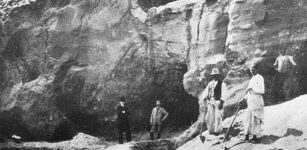 Neanderthals Decorated Their Caves With Rocks 130,000 Years Ago – Find At Krapina Site Reveals
Archaeology | Jan 19, 2017
Neanderthals Decorated Their Caves With Rocks 130,000 Years Ago – Find At Krapina Site Reveals
Archaeology | Jan 19, 2017 -
 Untold Story Of Mexico’s Ancient Giant Indians – Secret Knowledge Of The Aztecs Revealed – Part 1
Ancient and Unexplained Mysteries Library - Premium Content Preview | Sep 21, 2019
Untold Story Of Mexico’s Ancient Giant Indians – Secret Knowledge Of The Aztecs Revealed – Part 1
Ancient and Unexplained Mysteries Library - Premium Content Preview | Sep 21, 2019 -
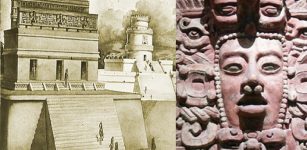 Ancient Maya Drug Containers – Scientists Identified What’s Inside
Archaeology | Jan 16, 2021
Ancient Maya Drug Containers – Scientists Identified What’s Inside
Archaeology | Jan 16, 2021 -
 Problems With The Age Of Man And Theory Of Evolution – What Happened In The Past?
Ancient and Unexplained Mysteries Library - Premium Content Preview | Oct 11, 2021
Problems With The Age Of Man And Theory Of Evolution – What Happened In The Past?
Ancient and Unexplained Mysteries Library - Premium Content Preview | Oct 11, 2021 -
 New Project Aims To Solve Mysterious Millennia-Old Rock Carvings Of Argyll, Scotland
Archaeology | Mar 20, 2017
New Project Aims To Solve Mysterious Millennia-Old Rock Carvings Of Argyll, Scotland
Archaeology | Mar 20, 2017 -
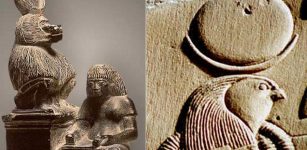 Full Moon In Ancient Myths And Legends Of Our Ancestors
Featured Stories | Nov 14, 2016
Full Moon In Ancient Myths And Legends Of Our Ancestors
Featured Stories | Nov 14, 2016 -
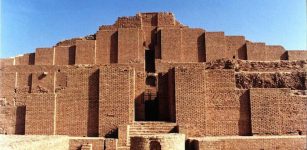 Chogha Zanbil: Huge Ancient Still Existing Ziggurat Dedicated To God Inshushinak
Featured Stories | Mar 10, 2016
Chogha Zanbil: Huge Ancient Still Existing Ziggurat Dedicated To God Inshushinak
Featured Stories | Mar 10, 2016 -
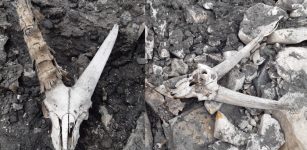 7,000-Year-Old Ibex Remains Found Under The Ice In Italy Are 1,700 Years Older Than Ötzi!
Archaeology | Dec 14, 2022
7,000-Year-Old Ibex Remains Found Under The Ice In Italy Are 1,700 Years Older Than Ötzi!
Archaeology | Dec 14, 2022 -
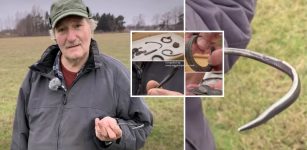 Silver Needle Dismissed As Trash Was Part Of A Stunning Viking Treasure Found By Farmer On Gotland
Archaeology | Nov 17, 2020
Silver Needle Dismissed As Trash Was Part Of A Stunning Viking Treasure Found By Farmer On Gotland
Archaeology | Nov 17, 2020 -
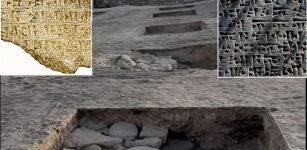 Monumental Structure Unearthed During Excavations Of Urartu-Era Karmir Blur
Archaeology | Nov 25, 2022
Monumental Structure Unearthed During Excavations Of Urartu-Era Karmir Blur
Archaeology | Nov 25, 2022 -
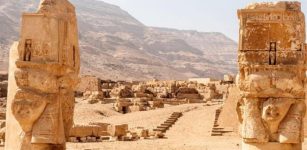 Cache Of 13,000 Ostraca Unearthed In Upper Egypt’s Sohag
Archaeology | Dec 21, 2021
Cache Of 13,000 Ostraca Unearthed In Upper Egypt’s Sohag
Archaeology | Dec 21, 2021 -
 Arsinoe II Rose To Power Through Manipulations, Murder, Conspiracies And Became Worshiped As A Goddess
Featured Stories | Apr 26, 2019
Arsinoe II Rose To Power Through Manipulations, Murder, Conspiracies And Became Worshiped As A Goddess
Featured Stories | Apr 26, 2019 -
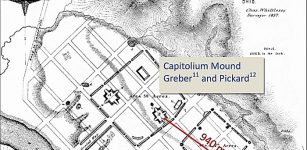 Archaeologists Refute Claims That A Comet Destroyed Hopewell Culture
Archaeology | Aug 11, 2023
Archaeologists Refute Claims That A Comet Destroyed Hopewell Culture
Archaeology | Aug 11, 2023 -
 Tomb Of Last Ruler Of A Sunken Kingdom Remains An Ancient Mystery
Ancient and Unexplained Mysteries Library - Premium Content Preview | Mar 24, 2021
Tomb Of Last Ruler Of A Sunken Kingdom Remains An Ancient Mystery
Ancient and Unexplained Mysteries Library - Premium Content Preview | Mar 24, 2021 -
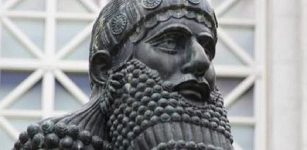 Hammurabi: Great King Of Babylon And His Code Of Justice
Historical Figures | May 14, 2017
Hammurabi: Great King Of Babylon And His Code Of Justice
Historical Figures | May 14, 2017 -
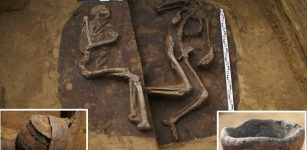 Unusual Grave Of The Trzciniec Culture Is An Archaeological Puzzle
Archaeology | Dec 23, 2019
Unusual Grave Of The Trzciniec Culture Is An Archaeological Puzzle
Archaeology | Dec 23, 2019
